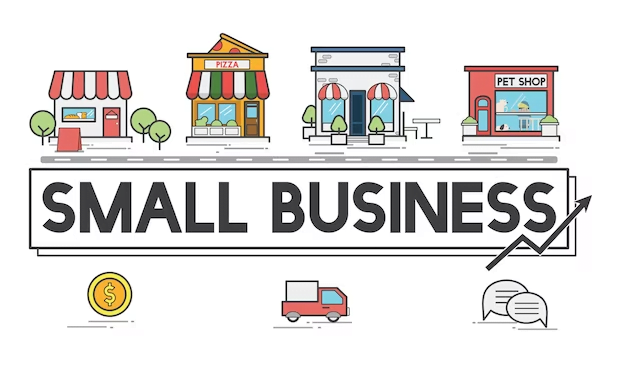In today's digital landscape, page speed plays a vital role in delivering a superior user experience and driving organic growth. It is no longer just a recommendation; it is a necessity. Slow-loading websites can lead to frustrated users, increased bounce rates, and lost conversions. On the other hand, lightning-fast websites can boost user engagement, increase customer satisfaction, and drive higher conversion rates. In addition to its impact on user experience, page speed also plays a crucial role in search engine optimization (SEO). Search engines like Google consider page speed as one of the ranking factors, influencing a website's visibility and organic traffic.
Understanding Page Speed
Page speed refers to how quickly the content on a web page loads. It is not just about the time it takes for a page to fully load; it is about the overall user experience and how quickly users can interact with the page. In an ideal scenario, users should be able to start engaging with a page as soon as the content starts appearing, without any delays or missing elements.
To measure and analyze page speed, various tools and metrics are available. Google's PageSpeed Insights is a popular tool that provides insights into a webpage's loading performance, user experience, and optimization. It evaluates metrics like First Contentful Paint (FCP), Largest Contentful Paint (LCP), Cumulative Layout Shift (CLS), and First Input Delay (FID) to assess the page's speed and user experience.
The Impact of Page Speed on User Experience
Page speed has a significant impact on user experience. In today's fast-paced world, users expect websites to load quickly and provide a seamless browsing experience. Slow-loading websites can frustrate users, leading to high bounce rates and lower engagement. On the other hand, fast-loading websites create a positive impression, encourage users to stay longer, and increase the likelihood of conversions.
Faster Loading Times Improve Conversion Rates
Multiple studies have shown a direct correlation between page speed and conversion rates. As page load times increase, the probability of visitors leaving without interacting also increases. For example, Google's research found that the probability of bounce increases by 32% when page load time goes from 1 second to 3 seconds. Similarly, a one-second delay in page load time could cost an e-commerce site $2.5 million per year in lost revenue. By improving page speed, businesses can enhance user experience, reduce bounce rates, and ultimately drive higher conversion rates.
Lower Bounce Rates and Higher Engagement

Image Source: FreeImages
A slow-loading website can lead to higher bounce rates, meaning users leave the site without exploring further. According to research, the probability of bounce increases by 90% when page load time goes from 1 second to 5 seconds. Users simply don't have the patience to wait for a slow website to load. By optimizing page speed and providing a fast and seamless browsing experience, businesses can reduce bounce rates, increase engagement, and keep users on their site for longer periods.
Positive User Experience Builds Trust and Loyalty
When users have a positive experience on a website, they are more likely to trust the brand and become loyal customers. Fast-loading pages create a sense of efficiency and professionalism, leaving users with a positive impression of the brand. On the other hand, slow-loading pages can lead to frustration and a negative perception of the brand. By prioritizing page speed and delivering a seamless user experience, businesses can build trust, foster customer loyalty, and establish a strong online presence.
The Role of Page Speed in SEO
In addition to its impact on user experience, page speed is a crucial factor in search engine optimization (SEO). Search engines like Google consider page speed as one of the ranking factors, influencing a website's visibility and organic traffic. Websites that load faster tend to rank higher in search engine results, leading to increased exposure and organic traffic.
Page Speed as a Ranking Factor
Google has made it clear that page speed is a ranking factor in its search algorithm. Websites that load quickly provide a better user experience, and Google aims to deliver the best possible results to its users. By prioritizing page speed, businesses can improve their search engine rankings and increase their chances of appearing on the first page of search results.
Mobile Optimization and Page Speed
With the increasing use of mobile devices for browsing the internet, mobile optimization has become crucial for SEO. Google considers mobile page speed as a ranking factor, emphasizing the importance of delivering fast and responsive mobile experiences. Websites that are optimized for mobile devices and load quickly on mobile screens are more likely to rank higher in mobile search results.
Core Web Vitals and Page Speed Optimization
Google's Core Web Vitals initiative further emphasizes the importance of page speed and user experience. Core Web Vitals are a set of metrics that focus on loading performance, interactivity, and visual stability. Metrics like Largest Contentful Paint (LCP), First Input Delay (FID), and Cumulative Layout Shift (CLS) help assess a website's page speed and user experience. Websites that meet or exceed the target performance for Core Web Vitals have a higher chance of ranking well in search engine results.
Strategies to Improve Page Speed
Now that we understand the importance of page speed for user experience and SEO, let's explore some strategies to improve page speed. By implementing these strategies, businesses can optimize their websites for faster loading times and deliver a superior user experience.
Image Optimization
Images can significantly impact page speed, especially if they are not optimized for the web. Compressing and resizing images can reduce their file size without compromising quality. Using appropriate image formats such as JPEG, PNG, or WebP can also help improve page speed. Lazy loading techniques, where off-screen images are loaded only when they become visible, can further enhance page speed.
Minify CSS, JavaScript, and HTML
Removing unnecessary characters, white spaces, and comments from CSS, JavaScript, and HTML files can reduce their file sizes and improve loading times. This process, known as minification, shrinks file sizes and results in faster page loading times. Additionally, consolidating multiple CSS and JavaScript files into fewer files can reduce the number of HTTP requests and further improve page speed.
Enable Browser Caching
Configuring web servers with suitable caching headers can instruct browsers to cache static resources such as images, CSS, and JavaScript files. Caching enables returning visitors to see the website more quickly, as their browsers can retrieve cached content instead of making fresh requests. By enabling browser caching, businesses can significantly improve page speed and reduce the load on web servers.
Enable Compression
Using server-side compression techniques like Gzip or Brotli can compress web pages and assets during transmission, reducing their size. Compressed files transfer faster, resulting in faster page loading times. By enabling compression, businesses can improve page speed and provide a faster and more efficient browsing experience to users.
Optimize Render-Blocking Resources
Identifying and addressing render-blocking CSS and JavaScript can improve page speed by optimizing the critical rendering path. Critical CSS can be included inline or deferred until the page has loaded, allowing the main content to load quickly. By optimizing render-blocking resources, businesses can ensure faster rendering and a more interactive browsing experience.
Reduce Server Response Time
Reducing server response time is crucial for improving page speed. Optimizing database queries, using caching methods, updating server hardware, or utilizing content delivery networks (CDNs) can help reduce server response time. By minimizing the physical distance between the server and users, businesses can significantly improve page speed and enhance user experience.
Prioritize Above-the-Fold Content
Above-the-fold content refers to the most important content that appears on the screen without scrolling. Prioritizing the loading of above-the-fold content ensures that users can quickly see and interact with essential elements without waiting for the entire page to load. By optimizing above-the-fold content, businesses can improve page speed and enhance the initial user experience.
Remove Unused Code and Plugins
Unused CSS, JavaScript, or plugins can add unnecessary overhead to a website and slow down page loading times. Removing any superfluous code or plugins from the website can reduce file sizes and improve page speed. By optimizing the codebase and eliminating unnecessary elements, businesses can create leaner and faster-loading websites.
Optimize Web Fonts
Using web fonts sparingly and considering system fonts or font subsets can reduce the number of font files and related download time. Large numbers of web fonts can significantly impact page speed, especially on mobile devices with slower connections. By optimizing web fonts, businesses can improve page speed and provide a faster and more efficient browsing experience.
Prioritize Mobile Optimization
With the increasing use of mobile devices for browsing, mobile optimization is crucial for page speed and user experience. Applying responsive design principles, optimizing images and resources for mobile devices, and limiting the use of resource-intensive features can improve mobile page speed. By prioritizing mobile optimization, businesses can provide a seamless and fast browsing experience across devices.
Regularly Monitor and Improve
Page speed optimization is an ongoing process. It is essential to regularly monitor a website's performance using tools like PageSpeed Insights and analyze the suggestions for improvement. As technology and best practices evolve, businesses should continuously optimize their pages based on the latest recommendations. By staying proactive and regularly improving page speed, businesses can ensure a fast and efficient browsing experience for their users.
Conclusion
Page speed is a critical factor in delivering a superior user experience and optimizing websites for search engines. Slow-loading websites can lead to frustrated users, increased bounce rates, and lost conversions. On the other hand, lightning-fast websites can boost user engagement, increase customer satisfaction, and drive higher conversion rates. By prioritizing page speed and implementing strategies to improve loading times, businesses can provide a seamless and efficient browsing experience, enhance their search engine rankings, and drive organic growth. Page speed is no longer just a recommendation; it is a necessity in today's digital landscape.

